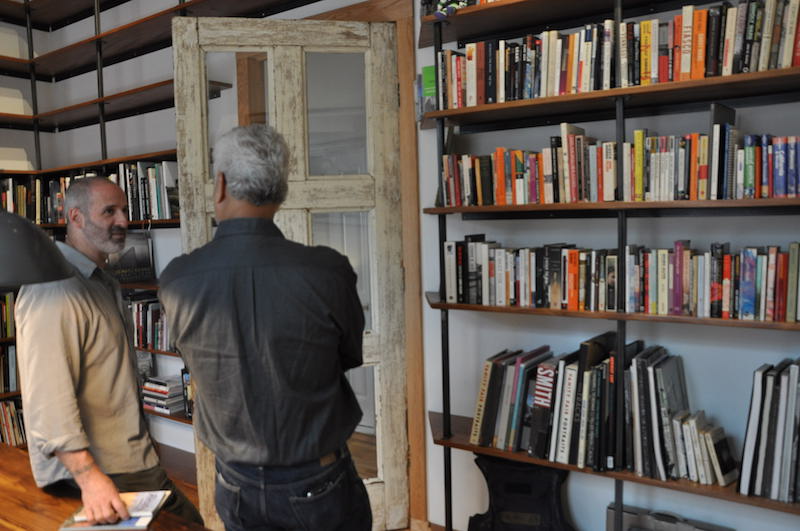
Space named for award-winning photographer Tim Hetherington
The Bronx Documentary Center has opened a photography library to celebrate the legacy of the late Tim Hetherington, a British photographer and award-winning filmmaker who was tragically killed covering the front lines of the war in Libya at the age of 40. His collection of more than 1,200 books, donated by his parents, now line the shelves of a second floor room of the center’s building on Courtlandt Avenue near The Hub.
Raised in Southport Sefton, England, Hetherington lived as an adult in New York City, where he amassed an extensive collection of photography books. Hetherington was a close friend of fellow journalist and photographer Michael Kamber, the co-founder of the Bronx Documentary Center, and was involved in the center’s planning.
“We just felt like it would be a really good and fitting tribute to Tim’s memory to have a place where all his books can be found and people could come in and look through his collection,” said Kamber.
Students from the center’s after-school program have already made use of the Hetherington Library as a resource for learning the art of the interview and the use of the lens. In addition to many art shows and other programs, Kamber and his volunteers host 28 kids between the ages of 11-17 to be trained in the practice of photography. They are getting ready for a photography show of their own on June 3.
“I think people need cultural institutions,” said Kamber. “I think it’s crucial to building communities and it really does enrich people’s lives.”
The library was constructed in a span of a year by the Bronx Documentary Center’s cadre of volunteers. Jesus Emmanuel, 34, a member of the Bronx Photo League and self-taught photographer, said he was excited to open a library solely dedicated to photo books. Sorting through the collection, Emmanuel has been inspired by works of Salvador Salgado and Eugene Richards, photographers that are featured in the library. He helped build the shelves, lay down the floors, and organize the catalog.
“To learn anything about photography or to learn about art is the true value of the Bronx Documentary Center,” said Emmanuel. “The value is the treasure that is here.”
Kamber opened the center in 2011, and over the past five years, it has become a place where people regularly gather to view art exhibits, attend film screenings and learn about photography. The center offers three after-school programs, and classes for adult photographers. The center is a unique haven in Melrose, breaking the landscape of bodegas, laundromats and Chinese restaurants that reside on that block of East 151st Street.
Jenisis Scott, 31, a Morrisania native, works for the Department of Education but is a filmmaker at heart. She has been volunteering since the center opened and recently entered her first film into the Bronx Film Festival. Working in a cultural institution like the Bronx Documentary has fueled her aspirations as an artist and filmmaker, she said. The center provides a positive environment and opportunity for people to harness practical skills that can eventually lead to paid work.
“As a black inner city youth having all these aspirations, you don’t see the possibilities in your face,” Scott said. “When the Bronx Documentary Center came, I saw the possibility.”
Artists, photographers, students, and member of the community came out for the official opening of the Hetherington Library last Saturday, some donating books, others looking through the collection. Gloria Rivera said she remembers walking by the center in the 1980s while attending high school on St. Ann’s Avenue.
“I used to call this the haunted house on the corner,” said Rivera. “When I moved back to this area I saw that the house that was once abandoned is now a beautiful place.”
Rivera met Kamber during the construction of the Bronx Documentary Center in 2011. Inspired by the positive and intellectual atmosphere, she signed up for the center’s mailing list and has been attending events and film screenings ever since.“It feels good to have this kind of organization in the South Bronx,” said Rivera. “We don’t have to travel all the way downtown to see an exhibit, and it’s good for the neighborhood.”

